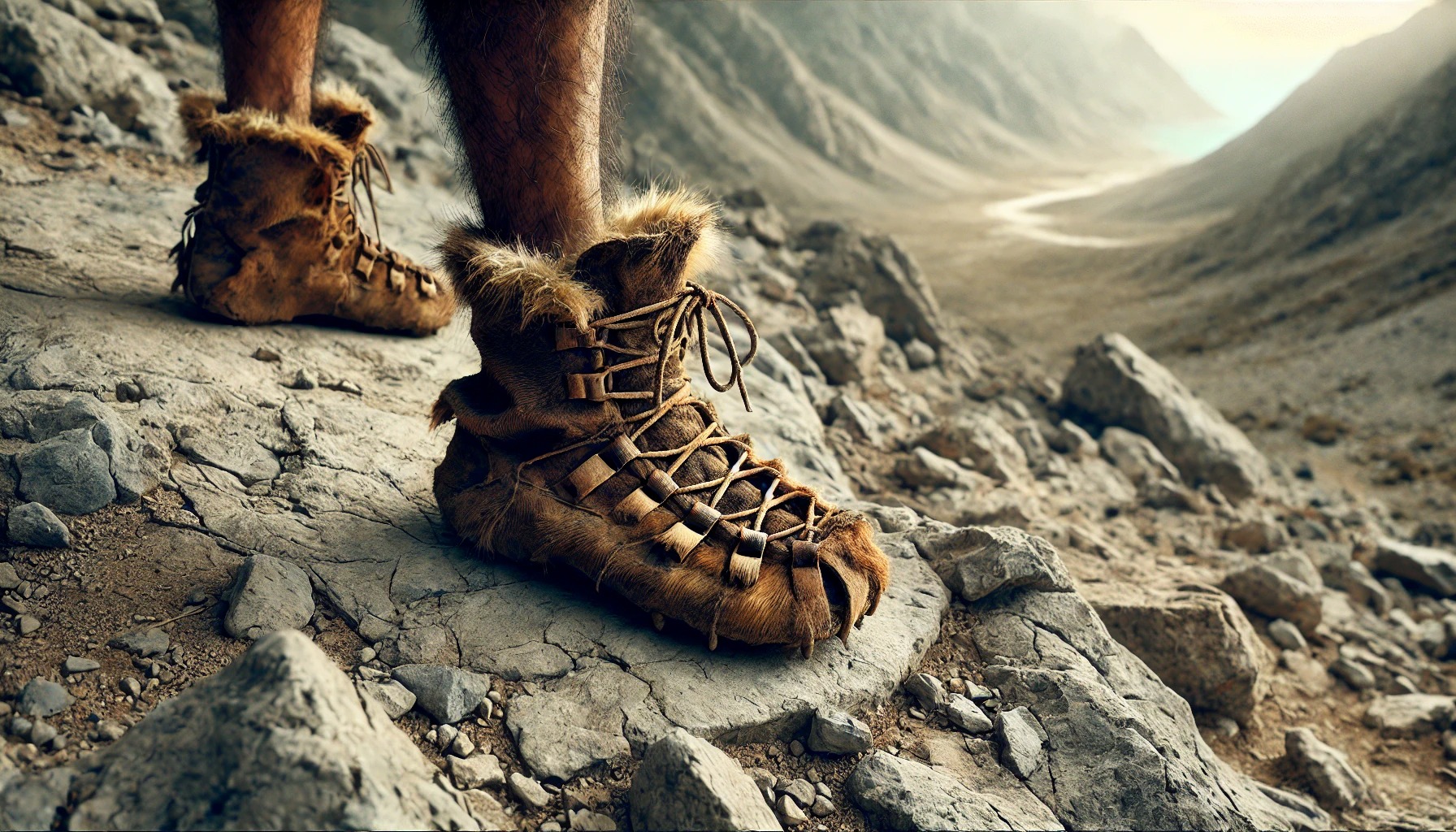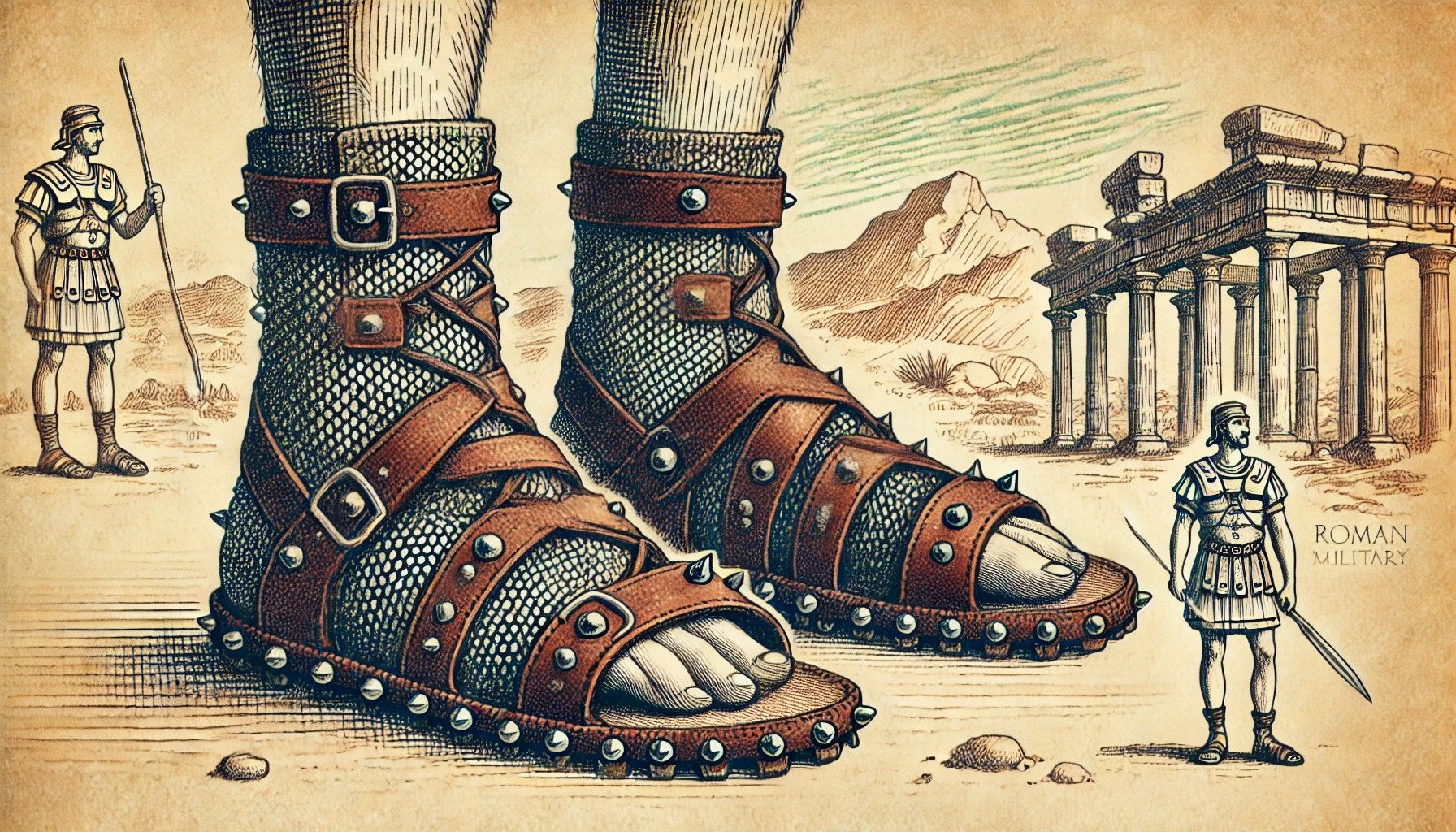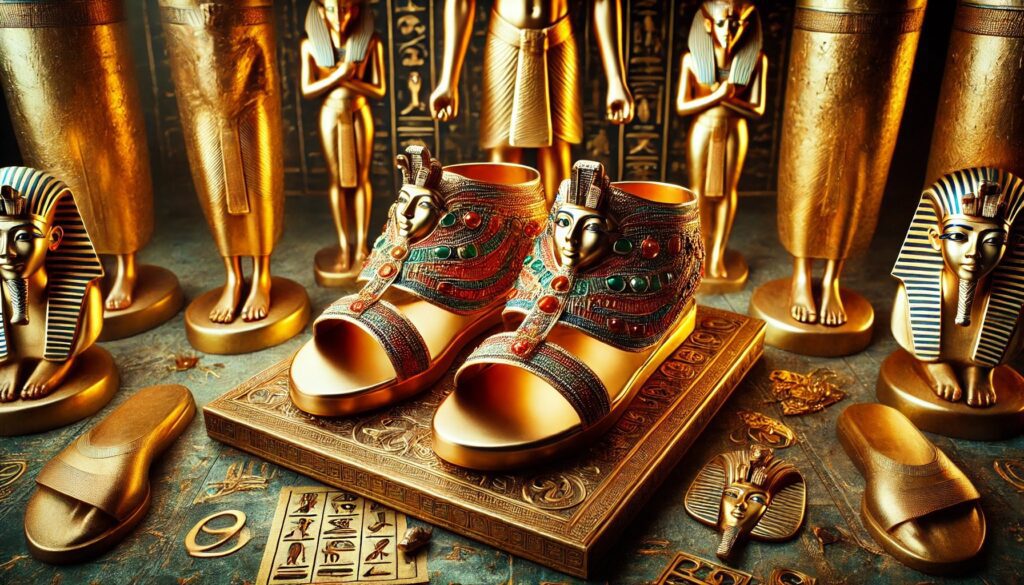Step into the fascinating world of footwear history, where ancient soles meet modern marvels! Our journey through time unveils 12 incredible milestones that shaped the shoes we wear today. From the earliest known footwear to cutting-edge designs, this captivating tale spans over 40,000 years of human ingenuity.
Did you know that the oldest surviving shoes date back 10,000 years? Or that high heels were originally worn by Persian soldiers? Get ready to uncover these surprising facts and more as we explore:
- The dawn of footwear and prehistoric origins.
- Ancient sandals that revolutionized foot protection.
- How shoes became symbols of social status and culture.
- The impact of the Industrial Revolution on shoe production.
- Modern innovations that continue to push boundaries.
Whether you’re a fashion enthusiast, history buff, or simply curious about the shoes on your feet, this journey through time will leave you with a newfound appreciation for the remarkable story of footwear. Let’s lace up and step into the past!

The Dawn of Footwear: Prehistoric Origins
Have you ever wondered when humans first decided to protect their feet? The story of the first shoe is as old as humanity itself.
Anthropologists believe that our ancestors began wearing foot coverings at least 40,000 years ago. This fascinating conclusion comes from studying changes in toe bones of ancient human remains.
Imagine a world where every step was a potential injury. Sharp rocks, thorny plants, and extreme temperatures were constant threats. Our resourceful ancestors crafted the first footwear to shield their feet from these dangers.
But what did these prehistoric shoes look like?
The First Shoe: A Prehistoric Marvel
Picture a simple wrap made from animal hide, secured with primitive laces. These early shoes were likely crude by today’s standards, but they marked a significant leap in human evolution.
The first shoe wasn’t just about protection. It allowed our ancestors to travel further, explore new territories, and adapt to diverse environments. This small innovation had a massive impact on human migration and survival.
Archaeological finds have given us tantalizing glimpses into this dawn of footwear. Fossilized footprints discovered in various parts of the world show clear impressions of primitive shoes, offering a window into our distant past.
Ancient Sagebrush Sandals: The Fort Rock Discovery
Fast forward to 1938, when the world’s oldest footwear was unearthed in Fort Rock Cave, Oregon. These ancient sagebrush sandals, dating back 9,300-10,200 years, offer a remarkable glimpse into early shoe design.
Imagine the excitement of the archaeologists as they carefully brushed away layers of volcanic ash to reveal these perfectly preserved sandals. Made from woven sagebrush bark, these shoes are a testament to the ingenuity of ancient civilizations.
The Fort Rock sandals weren’t just functional; they were a work of art. The intricate weaving pattern shows that even our distant ancestors cared about style and craftsmanship.
What’s truly fascinating is how similar these sandals are to modern designs. It seems that when it comes to comfortable footwear, some ideas are truly timeless!
The 5,500-Year-Old Armenian Leather Shoe
Picture this: a small leather shoe, about a woman’s size 7, perfectly preserved for over five millennia. This isn’t a fairytale, but the remarkable story of the world’s oldest leather shoe, discovered in 2008 in an Armenian cave.
A Timeless Design
What’s truly astonishing about this ancient footwear is its striking similarity to modern shoes. It’s not just a primitive foot covering, but a carefully crafted piece with a distinct shape and design.
The shoe was made from a single piece of cowhide, laced up the front and back. Stuffed with grass, perhaps for insulation or maintaining its shape, it paints a vivid picture of prehistoric life.
An Accidental Time Capsule
But how did this shoe survive for 5,500 years? The cave’s cool, dry conditions and a thick layer of sheep dung created the perfect preservation environment. It’s as if nature conspired to give us this remarkable glimpse into our past.
This excellent preservation condition allows us to see details that would otherwise be lost to time. We can almost picture the ancient Armenian who wore this shoe, walking through landscapes long transformed by history.
What This Find Tells Us
This archaeological find isn’t just about the shoe itself. It provides valuable insights into the skills and daily lives of our ancestors. The craftsmanship involved in creating such a shoe suggests a sophisticated understanding of leatherworking and design.
Egyptian Royalty and Roman Practicality: Sandals Evolution
From the sun-baked sands of Egypt to the grand streets of Rome, sandals have walked through history, evolving in design and significance.
Egyptian Sandals: Fit for Pharaohs
In ancient Egypt, sandals were more than mere footwear; they were symbols of status. Pharaohs and high-ranking officials adorned their feet with intricate designs, often made from gold and precious gems.
Imagine Tutankhamun’s golden sandals, discovered in his tomb. These weren’t just shoes; they were works of art, meant to carry the young pharaoh into the afterlife in style.

Roman Sandals: Marching Towards Innovation
As we move from the Nile to the Tiber, we see a shift in sandal design. The Roman military sandal, or caliga, was a marvel of practical engineering.
Picture a Roman legionnaire, marching across Europe in sandals designed for long-distance travel. These caligae had thick soles studded with iron nails for durability, and an open design to keep feet cool during long marches.
The Roman Empire’s Grandeur in Footwear
But Romans didn’t stop at military footwear. Their sandals became a canvas for displaying the empire’s grandeur. Senators wore distinctive red sandals, while emperors had the privilege of purple ones.
A Roman-era lady’s leather slipper, found in a London excavation, shows the level of craftsmanship. Decorated with openwork patterns, it’s a testament to the Romans’ flair for combining style with functionality.
Sandals as Social Status
Throughout the Mediterranean basin, sandals became a way to display one’s place in society. The intricate designs and materials used in sandal-making often indicated the wearer’s social status and wealth.
From simple peasant sandals made of plant fibers to the ornate footwear of the elite, sandals told the tales of an era where what you wore on your feet could speak volumes about your place in the world.
The Rise of High Heels: From Persian Military to European Nobility
Have you ever wondered why high heels, now associated with fashion and femininity, were originally designed for men? Let’s step back in time to uncover this fascinating journey.
Persian Warriors: The Unexpected Pioneers
Picture this: 10th century Persia, where mounted soldiers ride into battle. Their secret weapon? High-heeled boots. These weren’t for style, but for stability. The raised heel locked into the stirrup, giving riders a crucial advantage in combat.
From Battlefields to Ballrooms
Fast forward to the 17th century European courts. High heels had marched their way from Persian battlefields to the polished floors of European palaces. But why?
Imagine Louis XIV, the Sun King, striding into his court wearing red-heeled shoes. These weren’t just any shoes; they were a symbol of nobility. Only those in the king’s favor could wear these coveted red heels.
A Symbol of Status
High heels quickly became a status symbol among European nobility. The higher the heel, the higher the status. It wasn’t just about looking taller; it was about standing out.
Think about it: in an era where streets were muddy and unsanitary, elevated shoes were practical. But more than that, they literally and figuratively elevated the wearer above the common folk.
The Aesthetic Distinction
These early high heels weren’t just functional; they were works of art. Adorned with intricate designs, jewels, and fine materials, they were a testament to the wearer’s wealth and taste.
Gender Shift: High Heels in the Enlightenment Era
As we step into the Enlightenment era, we witness a fascinating twist in the evolution of shoes timeline. High heels, once a symbol of masculinity and power, began their journey towards becoming a staple of women’s fashion.
The Great Male Renunciation
Picture this: the late 18th century, a time of radical change. Men’s fashion took a dramatic turn towards simplicity and practicality. This shift, known as the “Great Male Renunciation,” saw men abandoning the ornate styles of the past, including high heels.
Women Step Up
As men stepped down from their heels, women stepped up. In a world where women were fighting for equal rights, adopting elements of male fashion became a statement of empowerment.
Imagine Marie Antoinette, the fashion icon of her time, strutting through Versailles in her high heels. She wasn’t just following a trend; she was making a bold statement about gender roles and power.
The Modern Era Dawns
By the 19th century, high heels had become firmly associated with femininity. This shift marked a significant milestone in the social status of footwear, transforming high heels from a symbol of male aristocracy to an emblem of female allure and power.
Industrial Revolution: Revolutionizing Shoe Production
The Industrial Revolution wasn’t just about steam engines and factories; it completely transformed the way we make and wear shoes. Let’s lace up and take a walk through this era of incredible innovation!
Mass Production: Shoes for Everyone
Imagine a world where every shoe was handmade. Now, picture the revolution that came with the invention of shoe-making machines. Suddenly, shoes became affordable and accessible to the masses.
In 1810, M.I. Brunel created the first mass-production system for shoes. This was a game-changer. Shoes that once took days to make could now be produced in hours.
New Materials, New Possibilities
The Industrial Revolution brought with it new materials that revolutionized shoe design. Rubber, for instance, changed everything.
The Birth of the Modern Marvel: Vulcanized Rubber
In 1839, Charles Goodyear accidentally discovered the process of vulcanization. This made rubber more durable and elastic, perfect for shoe soles. Imagine the excitement when people realized they could have waterproof, comfortable shoes!
The Sewing Machine: Stitching the Future
The invention of the sewing machine in the mid-19th century was another leap forward. It allowed for faster, more precise stitching, leading to sturdier and more diverse shoe designs.
Assembly Lines: Stepping Up Production
Henry Ford’s assembly line concept didn’t just revolutionize car production. Shoe manufacturers adopted this method, dramatically increasing output and reducing costs.
The Rise of Shoe Sizes
Before the Industrial Revolution, shoes were often made to order. But mass production needed standardization. This led to the development of shoe sizes, making it easier for people to find their perfect fit.
Further Innovation: The Evolution Continues
The Industrial Revolution set the stage for further innovation in shoe design and production. It paved the way for the modern marvels we see today, from air-cushioned soles to self-lacing sneakers.
The Birth of Sports Shoes: 20th Century Innovations
As we lace up and sprint into the 20th century, we witness a game-changing development in the evolution of shoes timeline: the birth of sports shoes. This era saw footwear transform from mere protection to performance-enhancing gear.
The Starting Line: Early Sports Shoes
Imagine the 1908 Olympics. Athletes are competing in what we’d now consider dress shoes. But change was on the horizon.
In 1917, Marquis Converse created the first shoe specifically designed for basketball. The Converse All-Star was born, revolutionizing not just sports, but fashion for decades to come.
Running Towards Innovation
The 1960s saw a surge in jogging’s popularity, and shoe companies raced to meet the demand. In 1964, Bill Bowerman and Phil Knight founded Blue Ribbon Sports, which would later become Nike.
Picture Bowerman pouring rubber into his wife’s waffle iron. This moment of inspiration led to the creation of the waffle sole, a major breakthrough in running shoe design.
The Modern Era: Technology Meets Fashion
As we entered the modern era, sports shoes became high-tech marvels. Brands like Nike, Adidas, and Reebok began incorporating air cushions, gel pads, and even computer chips into their designs.
Beyond the Track: Sports Shoes in Everyday Life
In recent years, sports shoes have transcended their original purpose. They’re no longer just for athletes; they’ve become a staple of everyday fashion.
From Michael Jordan’s iconic Air Jordans to Kanye West’s Yeezys, sports shoes have become cultural phenomena, blurring the lines between athletic gear and high fashion.
The Future: Smart Shoes and Sustainability
Looking to the future, we’re seeing the rise of “smart” shoes that can track performance and even adjust their fit. At the same time, there’s a growing focus on sustainability, with brands exploring eco-friendly materials and production methods.
Waterproof Wonders: Rubber Footwear Development
Splash! Let’s dive into the world of rubber footwear, a true modern marvel in the evolution of shoes timeline. This waterproof wonder has revolutionized how we approach wet conditions, both in work and play.
The Rubber Revolution
Picture a rainy day in the 19th century. Your leather shoes are soaked, your feet are cold, and you’re probably headed for a nasty cold. Then came the rubber revolution!
In 1823, Charles Macintosh discovered how to waterproof fabric using rubber. This laid the groundwork for waterproof footwear.
Galoshes: The First Step
The first rubber overshoes, known as galoshes, appeared in the 1830s. Imagine the joy of being able to walk through puddles without getting your feet wet!
Vulcanization: The Game Changer
In 1839, Charles Goodyear accidentally discovered vulcanization, making rubber more durable and elastic. This was a watershed moment for waterproof footwear.
The Birth of the Wellington Boot
In the mid-19th century, Hiram Hutchinson bought the patent for vulcanization in France. He created the first rubber boot, naming it after the Duke of Wellington. These “wellies” quickly became popular among farmers and outdoor workers.
From Work to Play
As the 20th century dawned, rubber boots found their way into leisure activities. Fishermen, hunters, and outdoor enthusiasts embraced this practical footwear.
Modern Innovations
Today, rubber footwear has come a long way from those early galoshes. We have lightweight, breathable rain boots, neoprene waders for fishing, and even fashionable rubber-soled shoes for everyday wear.
Controversial Designs: Crocs and Minimalist Shoes
In recent years, the shoe world has seen some designs that have turned heads, raised eyebrows, and sparked heated debates. Let’s step into the world of Crocs and minimalist shoes, two of the most controversial footwear trends in modern era.
Crocs: Love Them or Hate Them
Picture this: It’s 2002, and a new shoe appears that looks like a cross between a clog and a boat shoe, riddled with holes. Meet Crocs.
Originally designed as a boating shoe, Crocs quickly became a global phenomenon. Their comfort and practicality won many fans, especially among healthcare workers and chefs.
But Crocs also faced intense criticism for their unconventional appearance. They’ve been called everything from “ugly” to “a fashion sin.” Despite this, or perhaps because of it, Crocs have remained popular, even becoming an ironic fashion statement.
Minimalist Shoes: Back to Basics
On the other end of the spectrum, we have minimalist shoes. Inspired by barefoot running, these shoes aim to mimic the natural movement of the foot.
Imagine a shoe so thin you can feel every pebble beneath your feet. That’s the idea behind minimalist shoes. Brands like Vibram FiveFingers, with their individual toe pockets, epitomize this trend.
The Controversy
Both Crocs and minimalist shoes have faced their share of controversy:
- Health Concerns: Some podiatrists have raised concerns about the long-term effects of wearing Crocs or minimalist shoes regularly.
- Fashion Debate: While some embrace these designs, others see them as a fashion faux pas.
- Cultural Impact: Both have sparked discussions about the balance between comfort, function, and style in footwear.
Conclusion
As we step away from this journey through shoe history, we’ve traversed millennia of innovation, culture, and style. From the humble beginnings of sagebrush sandals to the cutting-edge designs of today, shoes have been more than mere foot coverings – they’ve been storytellers of human progress.
This evolution reflects our ingenuity, our social structures, and our ever-changing needs. Whether it’s the practical Roman military sandals or the status-defining high heels, each milestone in shoe history offers a unique glimpse into the lives of those who came before us.
As we look to the future, it’s clear that footwear will continue to evolve, blending form and function in exciting new ways. The next time you slip on your favorite pair, take a moment to appreciate the rich history and countless innovations that have led to that moment. After all, every step we take is a small part of this ongoing story – a story that began with our ancestors and continues with each of us today.

